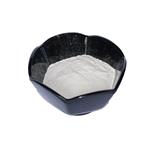- L-Homophenylalanine
-

- $0.00 / 25Kg/Drum
-
2025-04-16
- CAS:943-73-7
- Min. Order: 1KG
- Purity: 98.0%-101.0%
- Supply Ability: 500kg
- L-Homophenylalanine
-

- $10.00 / 1kg
-
2025-04-16
- CAS:943-73-7
- Min. Order: 1kg
- Purity: 99%
- Supply Ability: 20 ton
- L-Homophenylalanine
-

- $0.00 / 1KG
-
2025-04-15
- CAS:943-73-7
- Min. Order: 1KG
- Purity: 99%
- Supply Ability: 500000kg
|
| | L-Homophe-OH Chemical Properties |
| Melting point | >300 °C(lit.) | | alpha | 45 º (C=1, 3N HCl 19 ºC) | | Boiling point | 311.75°C (rough estimate) | | density | 1.1248 (rough estimate) | | refractive index | 44 ° (C=1, 3mol/L HCl) | | storage temp. | Keep in dark place,Inert atmosphere,Room temperature | | solubility | Soluble in dilute aqueous acid. | | form | Solid | | pka | 2.32±0.10(Predicted) | | color | White to Off-White | | InChI | InChI=1/C10H13NO2/c11-9(10(12)13)7-6-8-4-2-1-3-5-8/h1-5,9H,6-7,11H2,(H,12,13)/t9-/s3 | | InChIKey | JTTHKOPSMAVJFE-VIFPVBQESA-N | | SMILES | C(O)(=O)[C@H](CCC1=CC=CC=C1)N |&1:3,r| | | CAS DataBase Reference | 943-73-7(CAS DataBase Reference) |
| Hazard Codes | Xi | | Safety Statements | 22-24/25 | | WGK Germany | 3 | | HS Code | 29224999 |
| | L-Homophe-OH Usage And Synthesis |
| Description | L-Homophenylalanine is an amino acid derivative. It has been extensively used in the pharmaceutical industry as a precursor for production of angiotensin-converting enzyme (ACE) inhibitor: enalapril, delapril, quinapril and ramipril, which possesses significant clinical application in the management of hypertension and congestive heart failure (CHF). It acts as an anti-tumor reagent.
| | References | Hwang, J. Y., et al. "Simultaneous synthesis of 2-phenylethanol and L-homophenylalanine using aromatic transaminase with yeast Ehrlich pathway." Biotechnology & Bioengineering 102.5(2009):1323-9.
Ahmad, A. L., P. C. Oh, and S. R. Abd Shukor. "Sustainable biocatalytic synthesis of L-homophenylalanine as pharmaceutical drug precursor."Biotechnology Advances 27.3(2009):286-296.
https://www.alfa.com/en/catalog/H27295/
| | Application | L-homophenylalanine is used almost exclusively as single stereoisomer in pharmaceutical drug production. L-homophenylalanine as a common building block, due to the presence of L-homophenylalanine moiety as the central pharmacophore unit. L-homophenylalanine is also an important chiral intermediate to synthesize a variety of novel pharmaceuticals including β-lactam antibiotics, acetylcholinesterase inhibitor and neutral endopeptidace (NEP) inhibitor which retained their status as major contributors to human health preservation. L-homophenylalanine acts as a precursor for the synthesis of NEP inhibitors, which complements the effects of ACE inhibitors when used simultaneously, potentiates the outcome in the management of hypertension and congestive heart failure[1].
| | Chemical Properties | White Solid | | Uses | Antitumor agent. | | Uses | L-Homophenylalanine is used as a precursor in the pharmaceutical industry for the production of angiotensin-converting enzyme (ACE) and R-(-)-Homophenylalanin-ethylester. It is also involved in the synthesis of NEPA [(S,S)-N-(1-Ethoxycarbonyl-3-phenylpropyl)alanine], which is a key intermediate to prepare the ACE-inhibitors: enalapril, delapril, quinapril and ramipril. It acts as an anti-tumor reagent. | | Definition | ChEBI: A non-proteinogenic L-alpha-amino acid that is an analogue of L-phenylalanine having a 2-phenylethyl rather than a benzyl side-chain. | | Production Methods | Asymmetric reduction of prochiral ketone remains one of the most investigated methods to date for production of chiral L-homophenylalanine. One of the most established method for synthesizing L-homophenylalanine on a laboratory scale was carried out via enzyme-catalyzed asymmetric synthesis of keto acids. In this method, prochiral ketone was converted via reductive amination to enantiopure products with bulky side chains by addition of biocatalysts such as L-homophenylalanine dehydrogena. in the presence of cofactor. L-phenylalanine dehydrogenase is by and large preferred as it has mainly a catabolic function and accepts a wide variety of keto acids as substrates hence it is generally employed in the synthesis of L-homophenylalanine which carries very bulky side chains[1].
| | References | [1] Ahmad A, et al. Sustainable biocatalytic synthesis of L-homophenylalanine as pharmaceutical drug precursor. Biotechnology Advances, 2009; 27: 286-296.
|
| | L-Homophe-OH Preparation Products And Raw materials |
| Raw materials | 4-Morpholinecarboxylic acid, 2-oxo-3-(2-oxo-2-phenylethyl)-5,6-diphenyl-, phenylmethyl ester, (3S,5S,6R)--->2-acetamido-4-phenyl-butanoic acid-->D-Homophenylalanine-->(1R,2S)-2-Amino-1,2-diphenylethanol-->Benzyl (2R,3S)-(-)-6-oxo-2,3-diphenyl-4-morpholinecarboxylate-->E-PHENYLETHENYLBORONIC ACID-->N-[(1S,2R)-2-Hydroxy-1,2-diphenylethyl]-glycine Ethyl Ester-->2-Oxo-4-phenylbutyric acid | | Preparation Products | L-Homophenylalanine ethyl ester hydrochloride-->N-[(S)-(+)-1-(Ethoxycarbonyl)-3-phenylpropyl]-L-alanine-->(S)-4-Nitro-hoMophenylalanine-->(S)-2-amino-4-phenylbutan-1-ol |
|